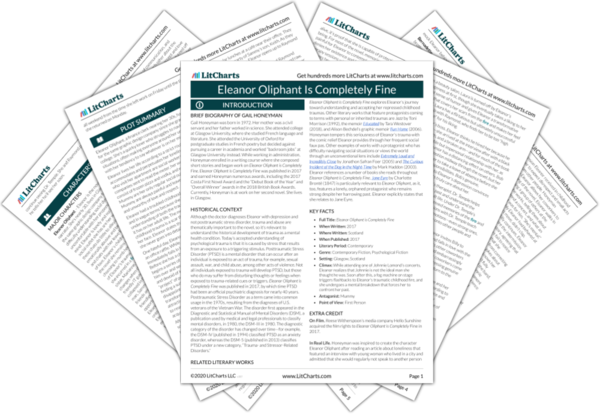The Enduring Impact of Trauma
As Eleanor Oliphant is Completely Fine unfolds, the reader gradually learns the full extent of Eleanor’s traumatic past: that her mother, burdened by the responsibility of having children, intentionally set fire to her house when Eleanor and her younger sister, Marianne, were children, killing herself and Marianne, and forcing Eleanor—the sole survivor—to endure physical and psychological scars from her traumatic childhood. As the reader learns more about Eleanor, it becomes obvious how…
read analysis of The Enduring Impact of TraumaShame and the Stigmatization of Pain
Shame figures prominently in Eleanor Oliphant, presenting itself most readily in the embarrassment with which Eleanor ultimately regards loneliness. Throughout the novel, Eleanor repeatedly hides how lonely and isolated she feels, fearing the repercussions of publicly flaunting a feeling that society deems unacceptable to express outside one’s private life. Honeyman emphasizes the shame Eleanor feels toward her loneliness to shed light on society’s tendency to regard pain and sadness—and one’s inability to address and…
read analysis of Shame and the Stigmatization of PainProjection and Denial
The true extent of Eleanor’s horrific, traumatizing past is unknown to the reader for much of the novel, as Eleanor perpetually represses its reality, choosing instead to deny that she feels any pain—as the title suggests, she is “completely fine.” Eleanor rejects ownership of her past in two primary ways: through denying it by assuming a skewed sense of reality, and through externalizing the feelings she associates with her past, projecting them onto other…
read analysis of Projection and Denial







